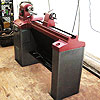Hey quick question... I think.
My wife and I run an online business selling clothing and we have to photograph each and ever piece. The problem were having is that our colors aren't coming out perfectly "true" to the garments real color tones. We've tried the Kodak software that came with the cameras and it doesn't work to well. Recently we have been enjoying Picasa3 powered by google and it works well, but I'd like to upgrade and am looking for software that has super quick/simple color editing and cropping ability. These are the only key features we need, anything else will just be icing on the cake.
Any thoughts? purchased software or free downloads, I'm game for anything that works.
Thanks heaps.
Aaron





 Reply With Quote
Reply With Quote












